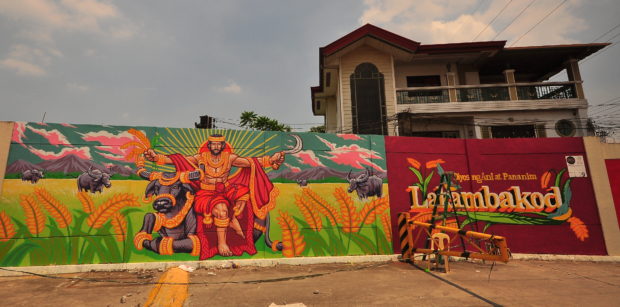Artists to fill town with murals to save farms

ART FOR A CAUSE An artists’ group launched “Kalye Art” to fill Pulilan with murals featuring the town’s rice culture. —CONTRIBUTED PHOTO
PULILAN, Bulacan — In many street corners of this rice-growing municipality, local artists have installed 40 murals depicting farm life.
The paintings hope to convince the government to preserve Pulilan farms, many of which had been converted for the town’s push for industrialization.
Pulilan leads rice production among Bulacan’s top five rice-producing towns.
In 2017, the town had an average yield of 5.23 metric tons per hectare, for a record 21,510 MT.
But the growth of factories, commercial sites and new road systems would reduce the town’s 3,163 ha of agricultural land to 2,765 ha by 2020, according to the municipal planning and development office.
Article continues after this advertisement100 paintings
Article continues after this advertisementArtists planned to paint up to 100 murals all over town until 2020 to press for preservation of Pulilan’s farms, according to Andrew de Guzman, cafe owner and artist.
His group, Jefarca Arts and Historical Society Inc., began putting up “Kalye Art” installations in 2012 to draw attention to industrialization’s impact on Pulilan’s rice culture.
The artists called their paintings “mandala,” the term for dried palay stalks that are crunched together as food for carabaos.
“For our purposes, mandala also means all the visual artists from Central Luzon,” who want the public to understand that food security must supersede a town’s need for commercial growth, De Guzman said.
Their advocacy has received the support of local food growers.
Many farmers prayed to be spared from modernization during the annual Carabao Festival on May 14, said Noel Mauricio, 57, head of the Pulilan farmers’ association.
Dangers of conversion
Mauricio said recent infrastructure projects “show how dangerous conversion can become.”
He said while residents appreciated the 9-kilometer Baliuag-Pulilan Bypass Road, it was “built on irrigated land.” —Carmela Reyes-Estrope